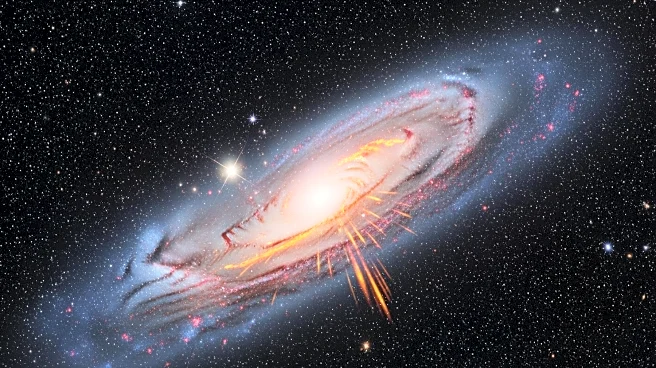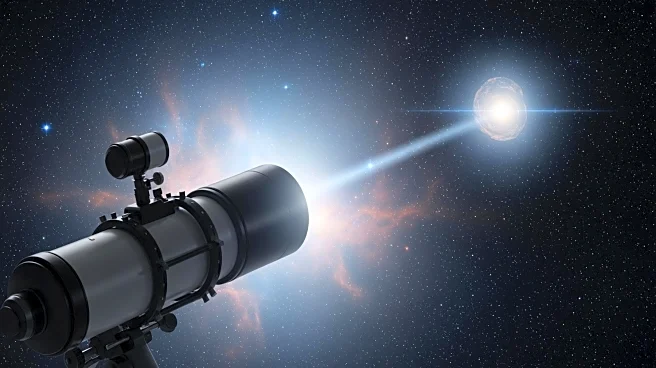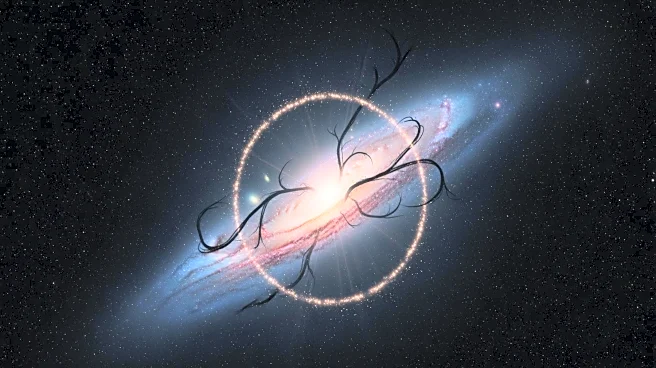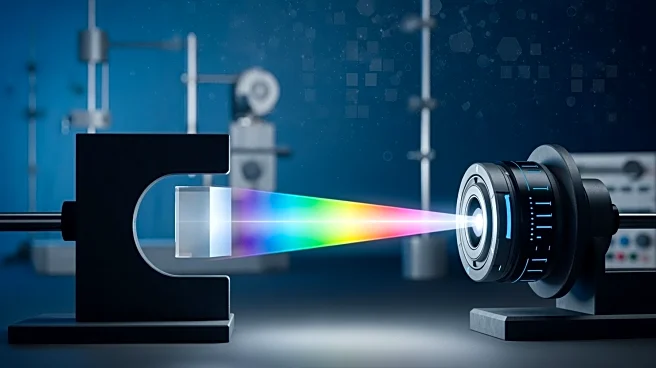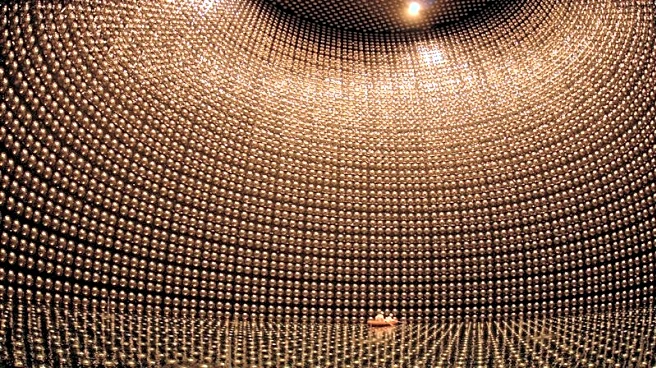What's Happening?
NASA's Fermi Gamma-ray Space Telescope has detected a mysterious gamma-ray glow at the center of the Milky Way galaxy. This glow has puzzled scientists since its discovery in 2008, with theories suggesting it could be caused by pulsars or dark matter.
Recent simulations using supercomputers have shown that dark matter collisions could create a bulge-shaped glow, supporting the dark matter theory. The study, led by Joseph Silk from Johns Hopkins University, suggests a 50% chance that dark matter is responsible for the glow. The Fermi telescope aims to detect WIMPs, hypothetical particles that could be a source of the gamma rays.
Why It's Important?
The confirmation of dark matter as the source of the gamma-ray glow would be a groundbreaking discovery in physics, providing evidence for the existence of dark matter, which has been theorized since the 1930s. This would have significant implications for our understanding of the universe's composition, as dark matter is believed to be five times more abundant than regular matter. The discovery could also validate the existence of WIMPs, advancing the field of particle physics and potentially leading to new technologies and scientific advancements.
What's Next?
The Cherenkov Telescope Array Observatory, under construction in Chile and Spain, is expected to provide higher resolution data by 2027, which could confirm the link between dark matter and the gamma-ray glow. If confirmed, this would be a major breakthrough in the search for dark matter. If not, scientists will need to explore other explanations for the glow, keeping the mystery of dark matter unsolved.
Beyond the Headlines
The study highlights the challenges in detecting dark matter, as it does not interact with light and is difficult to observe directly. The research also underscores the importance of international collaboration and advanced technology in solving complex scientific mysteries.






